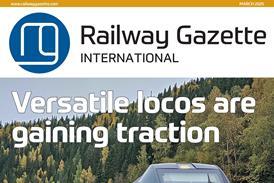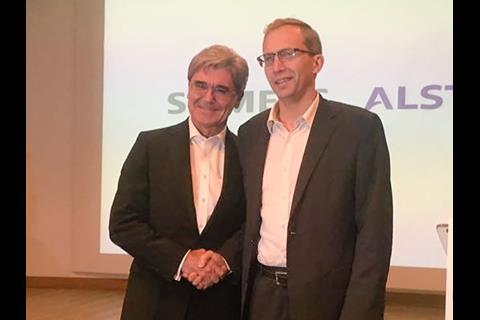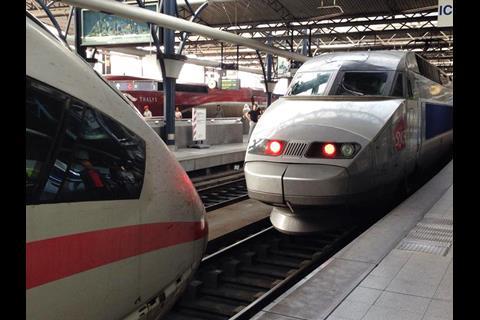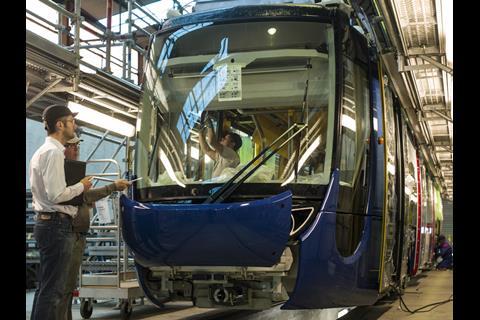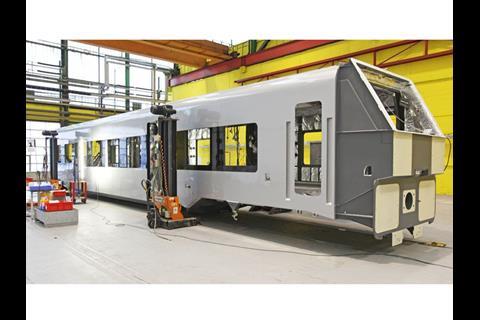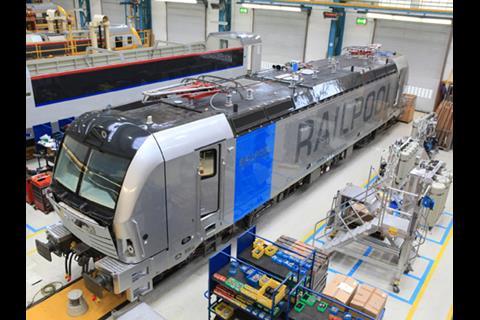INDUSTRY: Alstom and Siemens announced on the evening of September 26 that they had signed a memorandum of understanding for a merger of Siemens’ Mobility business with Alstom.
The transaction is expected to close at the end of 2018. Siemens would contribute its Mobility business, including its rail traction drives activities, in return for newly issued shares representing 50% of Alstom’s share capital on a fully-diluted basis.
The companies said the two businesses were ‘largely complementary in terms of activities and geographies’, and the deal would bring together ‘two innovative players’ in the rail market ‘with unique customer value and operational potential’.
Siemens has been considering options for its rail activities for some time. Speaking the day after the announcement, Siemens AG President & CEO Joe Kaeser said the company had concluded that Alstom would be the best fit for customers, employees, shareholders and Europe. He believes the deal would create a company with a more balanced global footprint, and said it also contains a political message as it would strengthen Europe's ‘technological ecosystem’ and provide well-paying jobs in times which were marked by populism, nationalism and ‘self-centred leadership’.
Emphasising that the global mobility market is growing and has enormous potential, Alstom SA Chairman & CEO Henri Poupart-Lafarge said there was a need for consolidation in the rail sector in the face of globalisation and digitalisation. The market is not just about Europe or the USA, he emphasised, noting that the companies face competition from China, Japan and Korea, while digitalisation is about more than just signalling. He emphasised that the merger was not a ‘do or die’ emergency decision, but had been agreed quickly because the ground was there already.
Responding to a question about a possible three-way merger with Bombardier Transportation, Kaeser said it was important to ‘learn to walk before running’.
‘Franco-German merger of equals’
The combined group is to be called Siemens Alstom. Its global headquarters and the management team for rolling stock would be in the Paris area, and the combined entity would remain listed in France. The headquarters of the Mobility Solutions business (which includes signalling and automation) would be in Berlin.
The deal would be a ‘Franco-German merger of equals’, Kaeser said, while Poupart-Lafarge added that the agreement was ‘a key moment in Alstom's history, confirming its position as the platform for the rail sector consolidation’.
The combined business would have global reach, scale and technical know-how, Poupart-Lafarge suggested. ‘By combining Siemens Mobility’s experienced teams, complementary geographies and innovative expertise with ours, the new entity will create value for customers, employees and shareholders.’
Kaeser said the aim was to propel a ‘key’ European industry in the face of massive consolidation, not to argue about the precise shareholdings and the location of the headquarters. The ‘real headquarters’ would be where customers and employees are, he said, while the rest is ‘symbolic’.
The board would comprise six directors designated by Siemens, including the chairman, four independent directors and the CEO. To ensure management continuity, Alstom SA Chairman & CEO Henri Poupart-Lafarge will continue as CEO, while Siemens Mobility CEO Jochen Eickholt will ‘assume an important responsibility in the merged entity’.
Poupart-Lafarge said the aim was to create jobs and opportunities, and the management team would be the ‘best people for the job’; he said it was not about nationalities, and this includes CEO role. There would be no revolving management positions.
The combined entity would have 62 300 employees in more than 60 countries. It would have an order backlog of €61⋅2bn, revenue of €15⋅3bn, an adjusted EBIT of €1⋅2bn and an adjusted EBIT-margin of 8⋅0%. Siemens and Alstom expect to generate annual synergies of €470m in the fourth year after the close of the deal, and target net cash at closing between €0⋅5bn and €1⋅0bn.
Responding to the suggestion that the merger could lead to a common train design for Europe, Kaeser said trains were designed for particular purposes, and so a common high speed train product platform would be a question for customers. Poupart-Lafarge added that Siemens’ Velaro was a very different platform to Alstom's TGV family.
Shareholders
Alstom shareholders at the close of the day preceding the closing date would receive two special dividends: a control premium of €4⋅00 per share (totalling €0⋅9bn) to be paid shortly after closing of the transaction and an extraordinary dividend of up to €4⋅00 per share (totalling €0⋅9bn) to be paid out of the proceeds of Alstom’s put options for the General Electric joint ventures of approximately €2⋅5bn subject to the cash position of Alstom. Siemens will receive warrants allowing it to acquire Alstom shares representing two percentage points of its share capital that can be exercised at the earliest four years after closing.
The transaction is unanimously supported by Alstom's board and Siemens' supervisory board. Alstom shareholder Bouygues ‘fully supports’ the proposal and will vote in favour at at an extraordinary general meeting to be held before July 31 2018.
The French state supports the transaction based on undertakings by Siemens, including a standstill at 50⋅5% of Alstom's share capital for four years after closing and certain governance and organisational and employment protections. The French state has also confirmed that the loan of Alstom shares from Bouygues will be terminated no later than October 17 2017 and that it will not exercise options granted by Bouygues. Bouygues has committed to keep its shares until the earlier of the extraordinary general meeting or July 31 2018.
The transaction is subject to regulatory approval, including foreign investment clearance in France and confirmation by French capital market authority AMF that no mandatory takeover offer has to be launched by Siemens following completion.
If Alstom were not to pursue the transaction, it would have to pay a €140m break fee.








